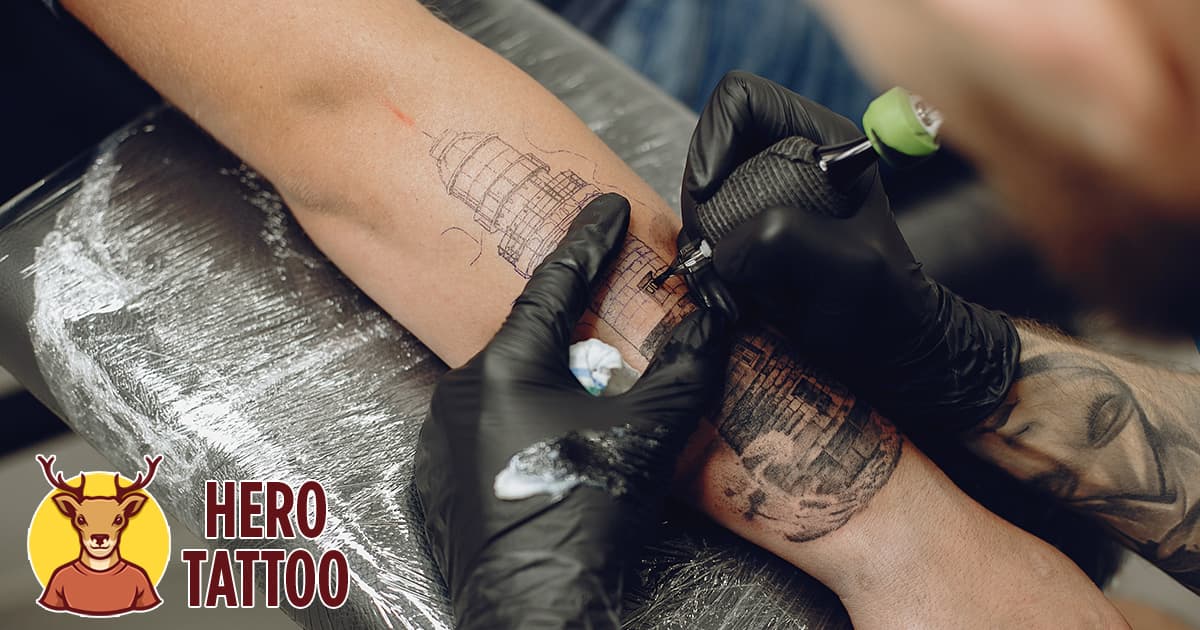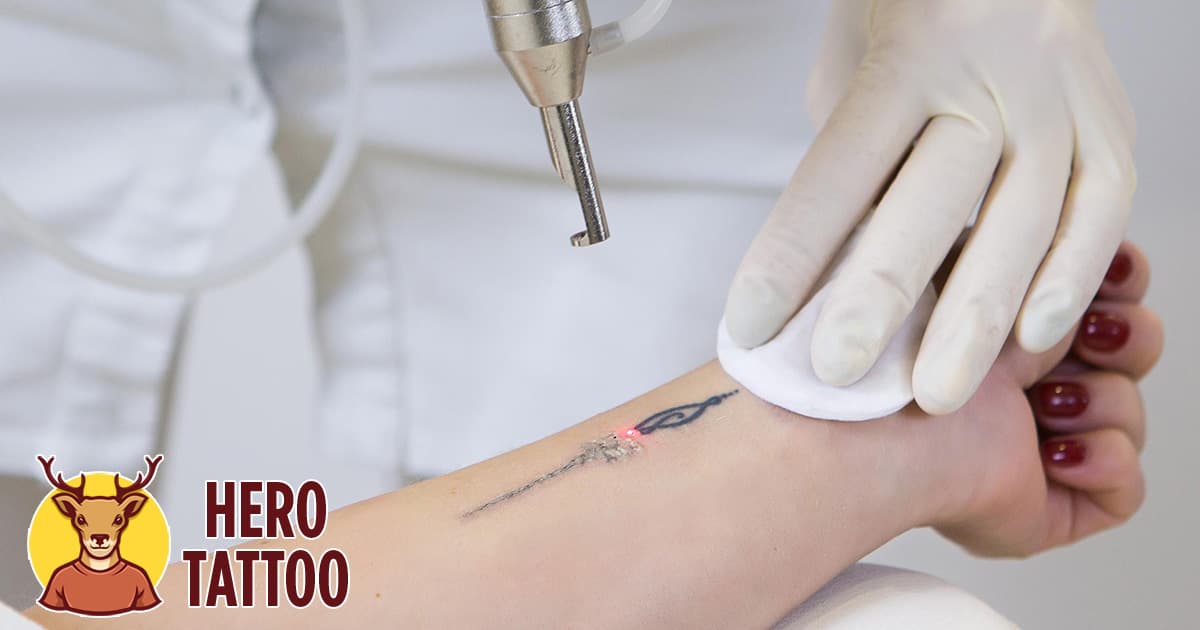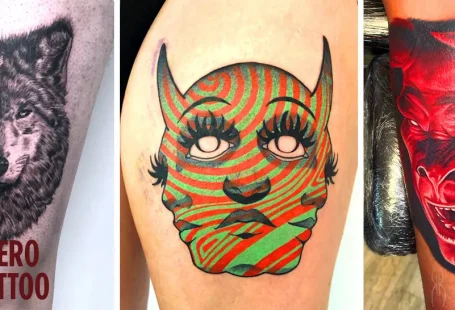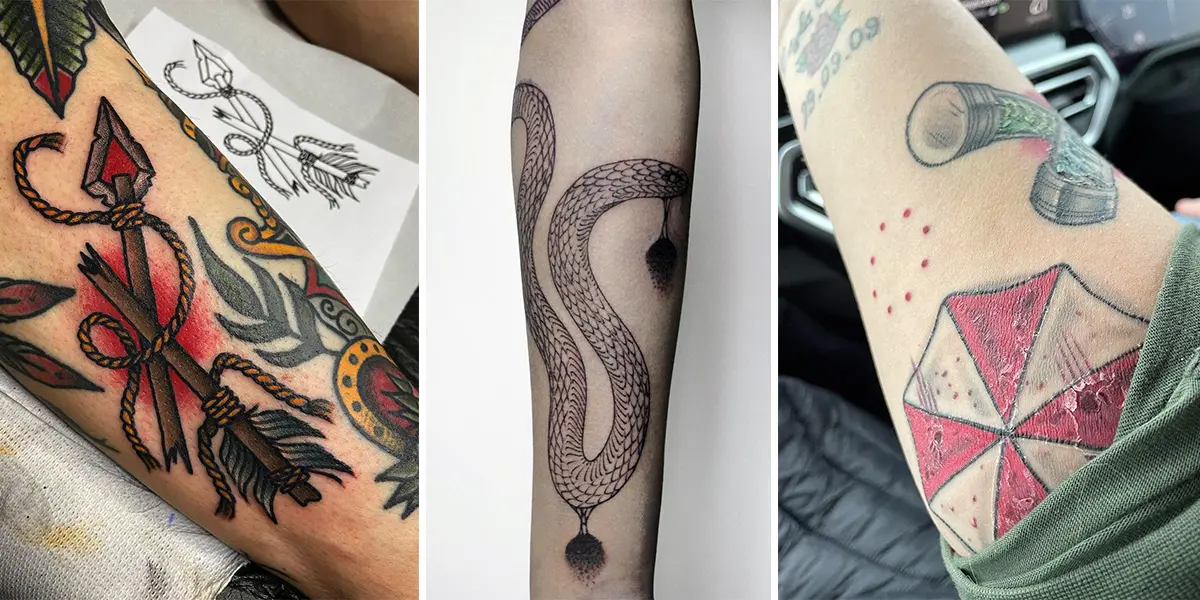Getting a tattoo that you don’t like or messing it up due to an allergic reaction or infection is an awful experience for everyone involved. Fortunately, there are various options available for removing an undesirable tattoo, one of which is the laser tattoo removal process.
Laser tattoo removal is the most effective and widely used form of tattoo removal. However, it is notorious for two things: it is expensive, and it takes an inordinate amount of time for clients to see natural tattoo fading and satisfying results after treatment.
But why is this the case? Don’t you think that today’s laser technology is so sophisticated that it should just take you one session to have a tattoo removed? To be honest, that would be fantastic, but the reality is far from that ideal. Standard laser removal can take up to ten, or even fifteen, unpleasant and expensive laser therapy sessions to complete.
Throughout the following paragraphs, we’ll look at why laser removal takes such a long time to function and provide visible effects. To find out more, continue reading the article.
Quick Takeaway: Tattoo Removal Using Lasers

To understand why laser tattoo removal results take so long to appear, we must first examine the laser equipment and how the laser tattoo removal procedure is carried out.
First and foremost, Q-switched lasers are used in laser tattoo removal. These lasers employ the photomechanical effect to target the ink, emit infrared radiation to heat the ink, produce shock waves, and dissolve the ink into the skin, all with minor damage to the surrounding skin. The following is an explanation of how the laser works:
- The laser beam delivers infrared light to the skin, where it interacts with the tattoo pigment to create the tattoo.
- Consequently, the ink absorbs the infrared light emitted by the printer (different ink colors absorb the light differently).
- The laser then fires a pulse of energy, known as a shock wave, into the ink to heat it.
- The ink begins to dissolve into the surrounding skin until it reaches a specific temperature.
In actual life, these actions take only a few seconds, even though only one shock wave is sufficient to accomplish them. To even see that the ink is vanishing, the machine must shoot hundreds of these waves into the ink at a time.
Because the heat or energy waves must be brief, otherwise, the laser might cause significant burns to the skin and surrounding tissue, this is necessary. If the heat waves remain for an extended period, they can cause scarring in addition to burning.
Laser Tattoo Removal and Multiple Sessions – Explained
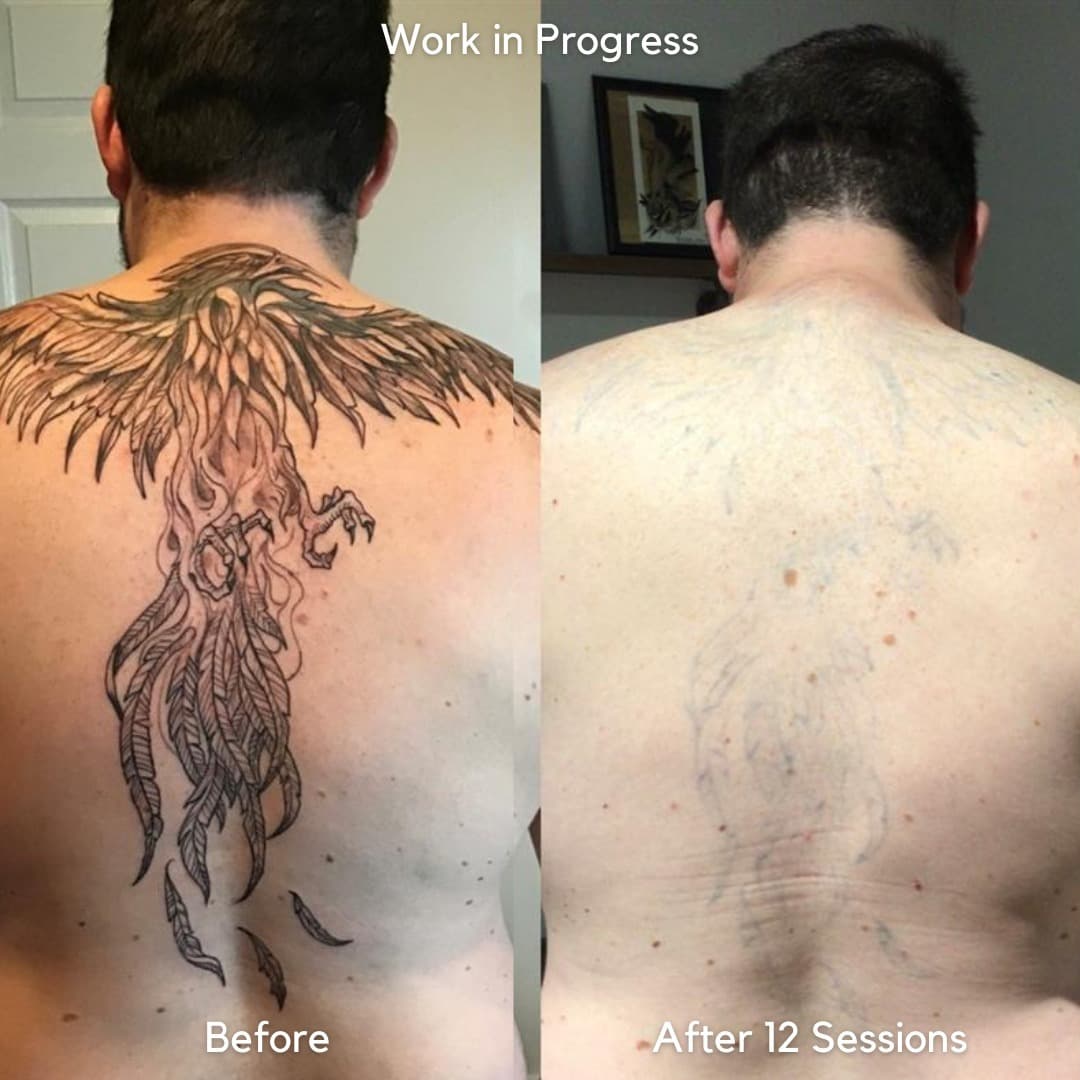
Why does laser tattoo removal take such a long time to complete?
Depending on the tattoo’s size being erased, the number of sessions required for laser tattoo removal might range from 10 to 25. These sessions cannot be completed quickly; it is necessary to allow the skin to recuperate between sessions to create an immunological resistance against the following removal procedures.
In some circumstances, it is possible that a fully finished tattoo removal procedure can last up to a year.
A lot will depend on your tattoo, the ink color or pigment, and the placement of your tattoo as to how many sessions you will need.
So, why do you need so many sessions over such a lengthy period of time?
As previously said, the standardized Q-switched lasers, which are currently the most effective for this sort of surgery, heat the ink, causing it to evaporate and eventually disappear. If the heat waves linger for an excessive time, they can burn and scar the skin, resulting in irreversible damage.
The laser also works with your skin and body to get optimal results. Sometimes, the body’s capacity to expel the ink or enable it to diffuse into the surrounding tissue does not cooperate, and the ink remains in the affected area.
The ink is not destroyed during the laser removal procedure; instead, it is eliminated from the body by its natural elimination mechanism after the laser breaks it down into tiny particles or pieces. If your skin or body does not cooperate, the laser will take longer to complete its task and make things function. This alone might be enough to justify several more removal appointments.
What are the factors that influence the number of laser removal sessions?
Every type of tattoo will require a different number of laser tattoo removal sessions. It is vital to understand this before proceeding. Various factors influence the number of sessions needed for your specific tattoo. So, here are the essential elements to consider when determining whether or not to extend your laser removal sessions:
- Your lymphatic system is a mechanism that transports lymph fluid.
There are many different tissues, organs, and vessels that work together to assist your body in eliminating toxins, metabolic waste, and undesired substances and materials. The lymphatic system is a network of tissues, organs, and vessels. The lymphatic system’s primary role, on the other hand, is to return colourless liquid called lymph back into the circulation, which is part of your cardiovascular system.
Your body can move infection-fighting blood cells throughout the body due to this mechanism. Because of this, you are better equipped to combat viruses, germs, infections, and inflammation, as well as a variety of immune inadequacies and deficits.
Laser removal would not be feasible without the use of this equipment. The body’s network of tissues and veins collaborates to eliminate the ink dispersed throughout the body.
Nevertheless, because your lymphatic system is already working hard to keep your body healthy and functioning correctly, it may take up to 2 months for it to treat the ink as an extra contaminant. During this period, the body recognizes and eliminates the excess toxins that have accumulated. As a result, your tattoo starts to fade as well.
The added toxins from the ink may cause your lymphatic system to get overwhelmed if you have a compromised immune system or if you’re already sick with anything. Because the body prioritizes the organs or the sick system over specific ink, it may take longer for the system to clear itself of dispersed ink after it has been absorbed. This, of course, has the additional benefit of extending the life of the ink.
- The Site of the Tattoo
The tattoo’s position can significantly impact the length of time required for laser removal. Now, recall how the lymphatic system is supposed to function. It works by removing toxins from the body through the bloodstream.
If your tattoo is placed in an area with a lot of blood flow, the ink will evaporate more quickly, and the tattoo will fade more quickly. As a result, you may require fewer sessions in the future.
The chest, or, to be more precise, the area near your heart, is the part of your body where blood flow is the most vigorous. Locations with poorer blood flow, on the other hand, will require more sessions since the tattoo will not fade as rapidly in these areas. The feet and hands are typical examples of such regions.
- Tattoo Ink Color (also known as Pigment)
In addition to the tattoo’s colour or pigment, another significant consideration for laser removal is its size. Some ink colours require fewer sessions than others because they absorb heat energy more effectively and quickly.
Darker colours, such as black, brown, or dark blue ink, need fewer sessions than lighter colours. Dark blue ink may be more difficult to erase than black ink. Black ink is the easiest to remove.
On the other hand, colors such as yellow, bright red, and brilliant orange ink necessitate a significant increase in the number of laser removal sessions. For one thing, due to their high brightness, these inks do not fully absorb infrared light, causing the removal sessions to be longer than necessary.
- Tattoo Design Dimensions
To be honest, this one is a no-brainer. The bigger the tattoo, the greater the number of sessions required to remove the ink altogether. Suppose a large tattoo incorporates bright colors such as yellow, red, or orange. In that case, it may be much more difficult to remove altogether. Large tattoos may need up to 25 removal treatments, and tattoos with vivid colors may necessitate even more sessions.
- Tattoo Safety and Health (Cases of Allergies and Infections)
People who have allergic reactions to tattoo ink or tattoo infections may wind up with tattoos that are screwed up and deformed as a result. Consequently, the tattoos may not appear high-quality and need to be entirely removed.
Because skin that has been injured or infected due to an allergic response or infection is susceptible, it may take several sessions to remove the residual ink altogether. As a result, the residual tattoo must be allowed to heal fully, which might take many months. The laser removal process must be carried out slowly to minimize scorching and scarring of the already injured skin.
- Age of the Skin and Tattoos
The most difficult tattoos to erase have just been applied and have not yet healed completely. They need the highest number of removal sessions of all. A tattoo must be allowed to heal completely before being removed with a laser. This is done to guarantee that no minor skin damage occurs during the removal process.
On the other hand, the older the skin gets, the more difficult it is to get the tattoo out of it.
Generally speaking, older skin has less suppleness and is drier in general. It does not bounce back, and, as a result, it is more susceptible to laser treatments in general. Additionally, shorter laser removal sessions may be required to minimize potential skin harm.
Note: Other factors that may contribute to the lengthening of the laser removal procedure include the need to wait between treatments, outdated laser technology, and untrained practitioners. A person who does not participate in physical activity, smokes, or consumes alcohol regularly is more likely to require further removal sessions as a result. Sickness and a weakened immune system might also lead to the need for lengthier laser removal treatments.
Ways To Make The Laser Removal Process Faster
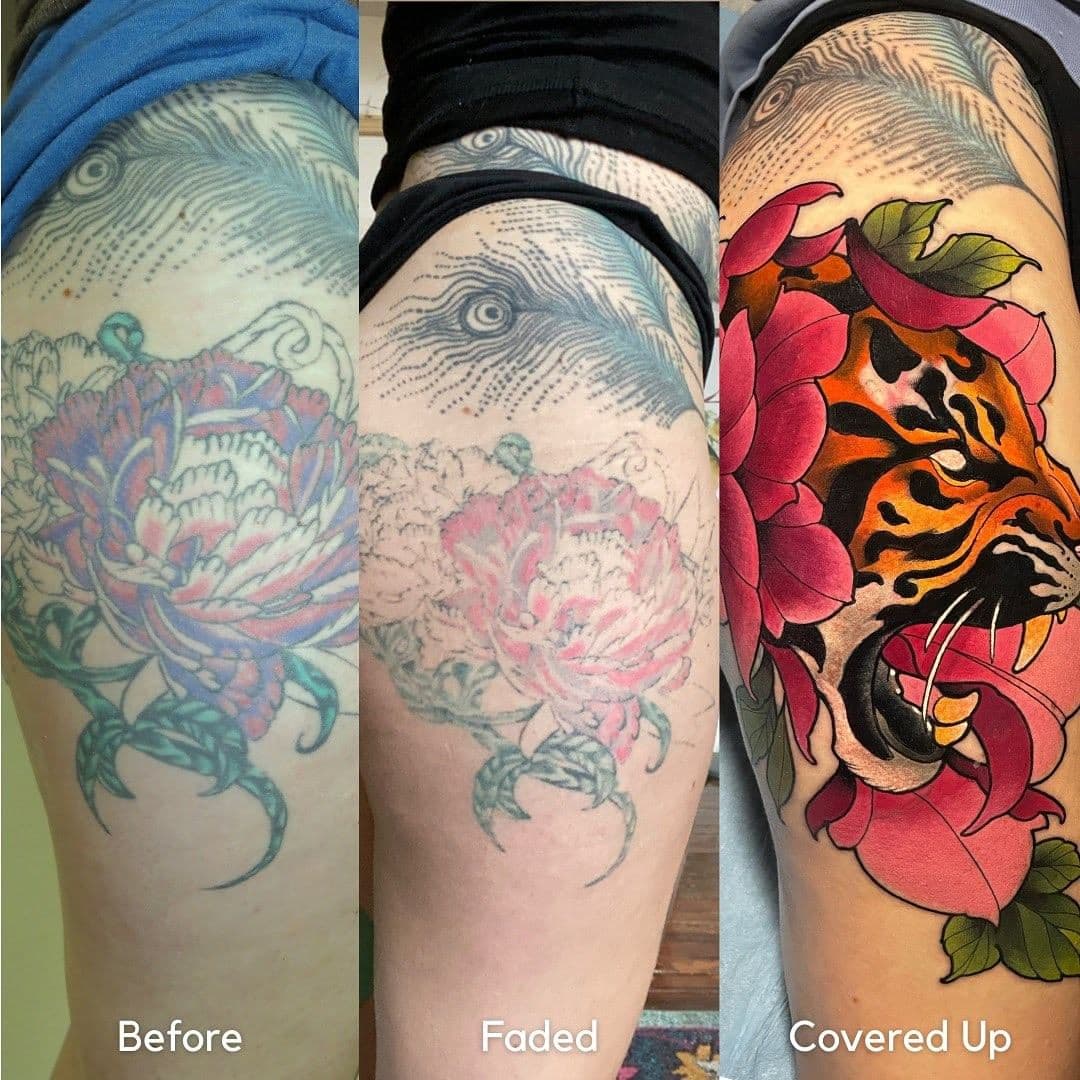
- Make a point of choosing laser removal facilities that need minimal rest periods between laser removal treatments.
They employ cutting-edge lasers that do not cause skin damage, even if the intervals between treatments are shorter at these facilities. This method can save up to 2–4 weeks of waiting time. On the other hand, such a procedure may be more expensive than standard laser removal.
- Decide to use the most advanced laser removal technique. Although it will be more expensive, if you want to speed up the laser removal procedure, you’ll need to visit a clinic that employs extremely rapid picosecond lasers. Generally safe, even for the most delicate skin types, these lasers can treat all ink hues and are effective on all ink kinds.
- Healthy living: Maintaining a healthy lifestyle is the single most effective way to expedite the laser removal procedure. A healthy lifestyle includes regular exercise, adequate water intake, adequate protein-and vitamin-rich meals, the cessation of smoking, the restriction of alcoholic beverages, the use of sunscreen, and other measures.
Concluding Remarks
Unfortunately, laser removal technology has not progressed significantly in many years. To completely erase a tattoo, a significant number of sessions are necessary. The procedure also has certain risks of side effects, such as discomfort or even skin damage and scarring, which are still possible, mainly when performed by unskilled professionals.
On the other hand, laser tattoo removal is currently the most successful and least expensive method of getting unwanted ink. The cost of the process is, well, time and money, which you will have to bear. But, at the very least, you’ll be free of the inconvenient tattoo.
